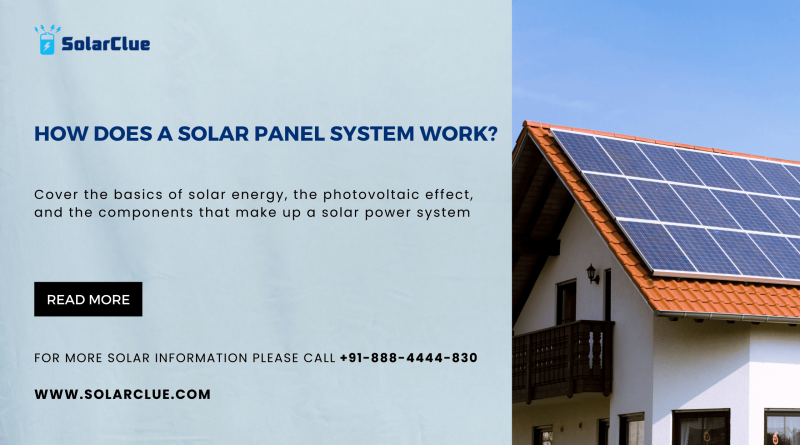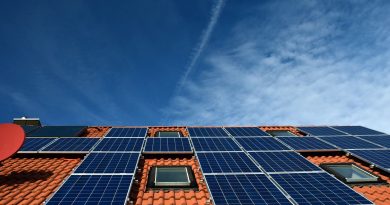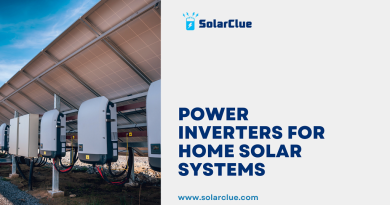How Does a Solar Panel System Work?
Solar energy is becoming increasingly popular as a renewable energy source, providing a sustainable alternative to fossil fuels. Understanding how a solar panel system works is essential for anyone considering adopting this technology. This blog will cover the basics of solar energy, the photovoltaic effect, and the components that make up a solar power system, including how solar panels convert sunlight into electricity and the role of inverters.
Table of Contents
- 1 The Science Behind Solar Energy
- 2 Solar Panels: Types and Functionality
The Science Behind Solar Energy
Solar energy originates from the sun, which emits solar radiation. This energy can be harnessed and converted into usable electricity using solar panels. The fundamental principle behind solar energy conversion is the photovoltaic effect, which allows sunlight to be converted directly into electrical power.
The Photovoltaic Effect
The photovoltaic effect is the process by which solar cells within a solar panel convert sunlight into electricity. When sunlight hits the semiconductor material (usually silicon) in a solar cell, it excites electrons, freeing them from their atoms. This movement of electrons generates an electric current. Solar cells are designed with electric fields that direct these free electrons, creating a flow of electric current that can be harnessed for power.
Components of a Solar Power System
A solar power system consists of several key components that work together to capture, convert, and store solar energy.
Solar Panels
Many solar cells comprise solar panels, which capture sunlight and convert it into electricity via the photovoltaic effect.
Inverter
The inverter converts the direct current (DC) electricity produced by the solar panels into alternating current (AC) electricity, which powers most household appliances.
Mounting Hardware
Mounting hardware secures the solar panels to the roof or ground, ensuring they are positioned at the optimal angle for sunlight exposure.
Optional Battery Storage
Battery storage systems store excess energy generated during the day for use at night or during cloudy periods.
Monitoring System
A monitoring system tracks the performance of the solar power system, providing data on energy production and consumption.
Solar Panels: Types and Functionality
There are different types of solar panels available, each with unique characteristics:
Monocrystalline Solar Panels
Made from a single continuous crystal structure, monocrystalline panels are highly efficient and have a longer lifespan but are more expensive.
Polycrystalline Solar Panels
Made from multiple crystal fragments, polycrystalline panels are less efficient and cheaper than monocrystalline panels.
Thin-Film Solar Panels
Made by depositing one or more layers of photovoltaic material on a substrate, thin-film panels are flexible and lightweight but generally less efficient.
The Role of Inverters in Solar Energy Conversion
Inverters play a crucial role in solar energy systems by converting the DC electricity produced by solar panels into AC electricity, which is used by most household appliances and fed into the electrical grid. There are different types of inverters, including string inverters, microinverters, and power optimizers, each offering different benefits in terms of efficiency, installation, and cost.
Net Metering and Grid Integration
Net metering is a system that allows homeowners with solar panels to send excess electricity back to the grid in exchange for credits on their utility bills. This interaction with the electrical grid ensures that solar panel owners can draw electricity from the grid when their panels are not producing enough power, such as at night or during cloudy weather.
Solar Panel Installation and Maintenance
Proper installation and regular maintenance are crucial for the efficiency and longevity of a solar power system. Professional installers ensure that panels are securely mounted and optimally positioned. Regular cleaning and inspection help maintain panel performance by removing debris and identifying potential issues early.
Solar Panel Efficiency and Performance
The efficiency of solar panels refers to the percentage of sunlight that can be converted into usable electricity. Factors affecting efficiency include the type of solar panel, installation angle, shading, and temperature. Performance monitoring systems help track the efficiency and output of the system over time.
The Future of Solar Technology
Advancements in solar technology are continuously improving efficiency, reducing costs, and expanding applications. Emerging technologies such as bifacial panels, perovskite solar cells, and solar skins offer promising developments that could revolutionize the solar industry.
Common Misconceptions About Solar Power Systems
There are several misconceptions about solar power systems that may deter potential users. Some common myths include the belief that solar panels are too expensive, do not work in cloudy or cold climates, or require excessive maintenance. Addressing these misconceptions can help more people understand the benefits and feasibility of solar energy.
Conclusion
Solar energy offers a sustainable and increasingly affordable alternative to traditional fossil fuels. Understanding the science behind solar panels, the components of a solar power system, and how solar energy integrates with the electrical grid can help individuals make informed decisions about adopting this renewable energy source.
Here at SolarClue®, we offer a smart, practical, and “beautiful” solution. You will be answered for all the questions related to Solar.
We provide all kinds of brands that are the Best Solar panels in India.
If you are the one who is planning for the solar power system. Don’t hesitate to contact our team!
Looking forward to empowering you with solar energy, just like hundreds of our other clients!
FAQs
1. What is the photovoltaic effect?
The photovoltaic effect is the process by which solar cells convert sunlight into electricity, involving the excitation of electrons in a semiconductor material.
2. What are the main components of a solar power system?
The main components include solar panels, an inverter, mounting hardware, optional battery storage, and a monitoring system.
3. How does net metering work?
Net metering allows homeowners to send excess electricity generated by their solar panels back to the grid in exchange for credits on their utility bills.
4. What types of solar panels are available?
The main types of solar panels are monocrystalline, polycrystalline, and thin-film.
5. Is solar energy effective in cloudy or cold climates?
Solar Panels can generate electricity even in cloudy or cold weather, though their efficiency decreases compared to sunny conditions.



